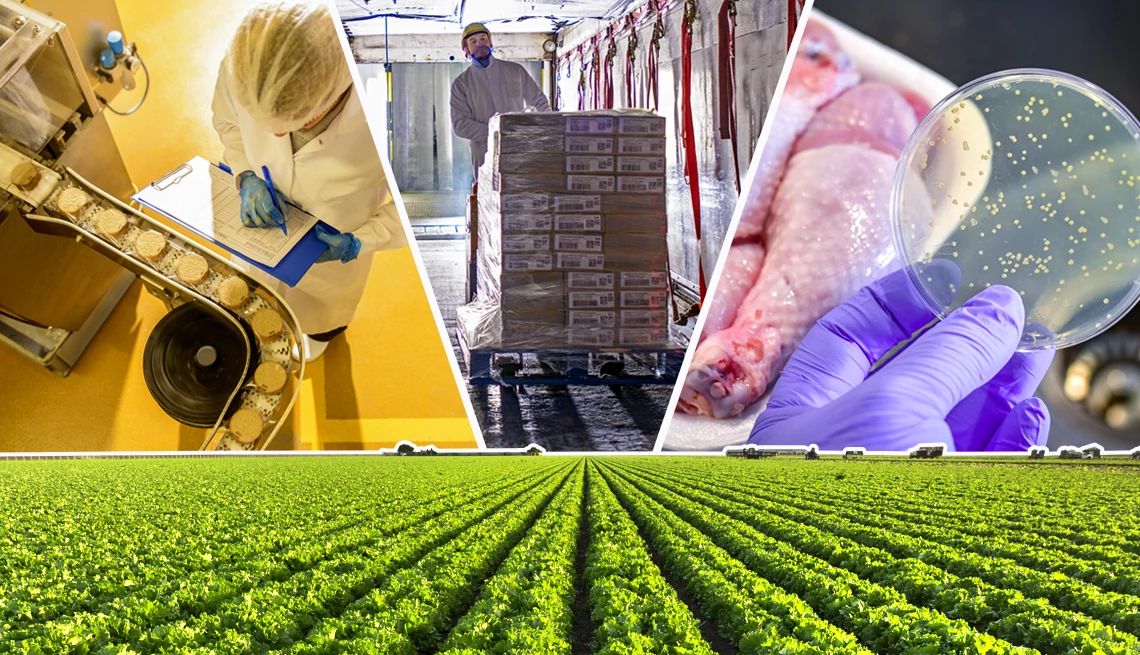AARP Hearing Center


As soon as her daughter’s fever soared to 106 degrees, Suzie Braymen knew she had to take her to the hospital, but on the way, Sydney had a seizure, lost consciousness and turned blue.
“I pulled right into a fire station and lay on the horn. They took her the rest of the way to the hospital after they revived her,” she says. “It was at least two weeks of a nightmare, not knowing. And just watching her be so sick — I’ve never seen anybody so sick.”


AARP Membership— $12 for your first year when you sign up for Automatic Renewal
Get instant access to members-only products and hundreds of discounts, a free second membership, and a subscription to AARP the Magazine.
Both of Braymen’s daughters, then 20 and 17, were sickened by a 2009 outbreak of E. coli linked to recalled cookie dough. Though Melody recovered relatively easily, Sydney, who has cerebral palsy, fought for her life and lost a kidney.
Their experiences underscore the dangers of foodborne illnesses and why the U.S. system of food recalls is so critically important. That system is in the spotlight again after this summer’s outbreak of listeria traced to sliced deli meat claimed 10 lives and hospitalized every known infected individual. The outbreak triggered a temporary warning from the government to not purchase any meats sliced at deli counters until public health officials could identify the source. The investigation is still active.
“Feeding the public at large carries the heavy burden of responsibility to take every measure to ensure the safety of every food product produced,” says Mitzi Baum, chief executive officer of Stop Foodborne Illness, a nonprofit group. “When these basic practices are skipped or skimped, it’s the consumers that pay the ultimate price with their lives.”
What leads to food recalls?
Food recalls occur when safety issues arise such as hidden allergens, dangerous pathogens, mislabeling or even foreign objects. Despite efforts by food manufacturers and regulators to protect consumers, the system isn’t foolproof. In fact, each year roughly 1 in 6 Americans get sick from foodborne diseases, according to the Centers for Disease Control and Prevention (CDC).
A major problem within today’s food production chain stems from the rapid pace of change in manufacturing with the introduction of more ingredients, traveling greater distances and an increase in ready-to eat-foods, says Darin Detwiler, an associate teaching professor at Northeastern University and a former Food and Drug Administration (FDA) and U.S. Department of Agriculture (USDA) food safety adviser.
“The speed at which we have consumers’ behavior changing, retail changing, food production changing, technologies associated with food changing — is so much faster than when policy change happens,” he says.
Recalling a product with multiple ingredients is far more complicated than a single-ingredient recall. Peanuts? That’s manageable. But a lasagna made with dozens of ingredients, where any one could be the culprit? That’s a different beast altogether.
“There was a huge salmonella outbreak with peanuts about 10 years ago, and over 3,900 different types of products had to be recalled because there were peanuts, like peanut dust, peanut powder, kinds of flour.... People had no idea that it was being recalled because they didn’t realize peanuts were in it. So it just becomes much more complicated,” Detwiler says.
Are foodborne pathogens on the rise?
Older adults, especially those with weakened immune systems, are particularly vulnerable to foodborne illnesses. That’s because, as we age, our immune systems and organs are less efficient at recognizing and eliminating harmful germs. Chronic conditions like diabetes and medications that weaken the immune system add to the risk. Additionally, aging reduces stomach acid, which is important for killing germs and reducing the risk of illness, the CDC says.
This contributes to an estimated 48 million infections of foodborne diseases each year in the U.S., resulting in 128,000 hospitalizations and 3,000 deaths, according to 2018 CDC data.
These estimates could be low because many people recover without medical care and are not tested for foodborne illness.































































More From AARP
8 Major Health Risks for People 50 and Older
A look at the top killers — and how to dodge themFood Poisoning or Stomach Bug: Decode Your Symptoms
How they differ and when to see a doctor
Do You Really Need to Wash Fruits and Vegetables?
Do’s and don’ts of cleaning produce, other foodsRecommended for You